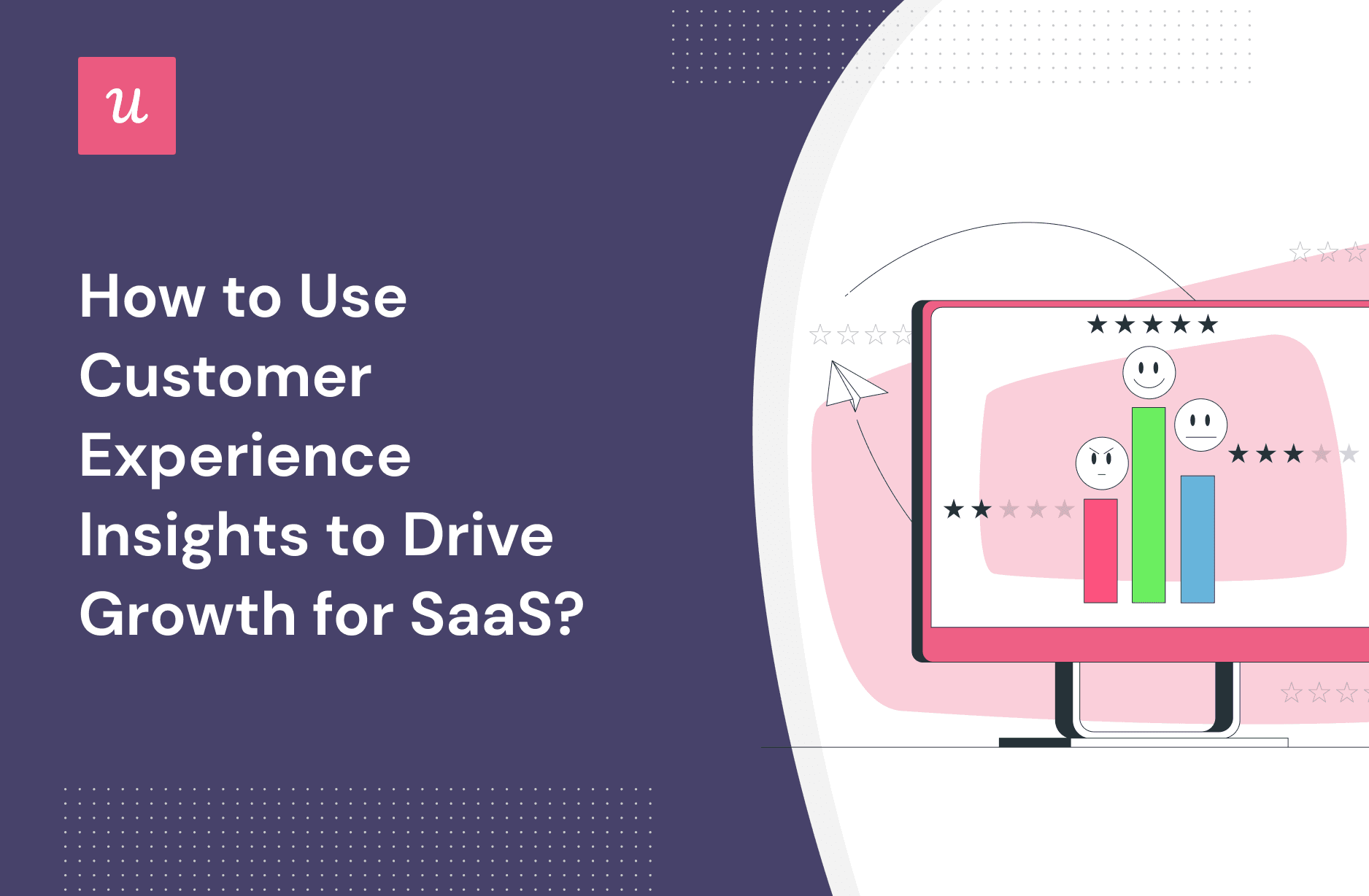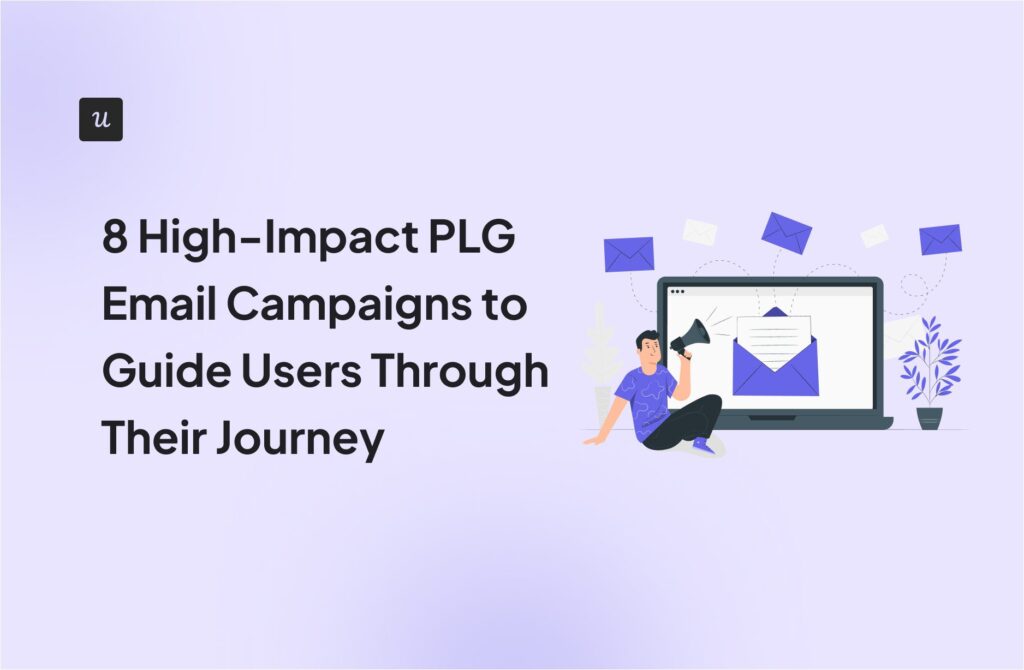
How to Use Customer Experience Insights to Drive Growth for SaaS?
With the right customer experience insights, you can remove the barriers that have been stunting your product growth for ages.
But how exactly do you leverage the goldmine of customer experience data to grow your SaaS?
In this post, we’ll take you through the ins and outs of smart product analytics and in-app surveys—so you can combine them to collect and leverage insights to cultivate product growth.
Get The Insights!
The fastest way to learn about Product Growth, Management & Trends.
What are customer experience insights?
If we understand customer experience as the interactions between your customers and your brand. Then, customer experience insights are the valuable findings you get from analyzing customer feedback and user interactions with your product.
Such insights can provide a comprehensive view of the customer’s journey, their needs, preferences, and how they interact with your product. And they’re a goldmine for any SaaS business looking to scale, as they tell you what your customers want and how to meet their needs.
How to collect important customer experience insights?
To get customer experience insights, you first need to analyze collected data—for which there are many methods. These can include:
- Collecting customer feedback across touchpoints to identify points of friction.
- Gauging customer sentiment from quantitative data (i.e. customer ratings, NPS surveys, etc).
- Monitoring customer behavior changes over time through product analytics.
- Segmenting your user base to analyze and understand their JTBDs, goals, and responsibilities.
The question is, what do you do with all of the information and insights you get?
How to leverage experience insights across the customer journey?
The best course of action to improve customer experience is going to depend on the data you gather and where you got it from.
Let’s go over ten tactics you can follow according to different sources of insights.
Build customer profiles to tailor the onboarding process
Welcome surveys (like the one presented below) are probably the best way to collect data from new users.
With them, you can understand what job they need to get done with your product, what goals they have, and what path they should take to achieve success.
What’s better: you can use the insights to personalize the onboarding process so it’s more relevant to what your customers intend to achieve with your product—and even design your marketing strategy around it.

Track customer interactions to gain actionable insights
With product analytics, you can understand how your users use your product. This includes how long they engage with the product, what features they use (through feature tagging like in the GIF below), and their overall progress through the user journey.
This leads to plenty of insights you can act from. For example, one common instance is when users are ignoring or not using enough of a feature that’s key to their success.
In this scenario, you want to create and set up in-app guidance to incentivize users to try core features they’re missing.

Understand customer expectations to improve in-app experiences
Analyzing open-ended surveys is a great way to get insights on a silver platter.
It’s pretty straightforward since users will simply tell you their thoughts and expectations, and you can see what you can do to improve.
For example, if you send a feature request survey (like in the screenshot below), you’ll be able to tell what features are the most expected from regular users and work to implement them.

Analyze customer engagement data to increase customer retention
Another way to get insights is through session recordings.
Session recordings allow you to vividly watch how your users navigate your app and see where they tend to get stuck. You can spot in-app issues such as dead clicks, bugs, or web page freezing. And makes it possible to come up with ways to fix those friction points and prevent at-risk customers from churning.
Identify happy paths to duplicate positive customer experience
Once you’ve collected enough data from your user’s behavior, you can use path analysis (like in the screenshot below) to identify the happy path and optimize the customer experience to keep users in it.
You see, the happy path is the series of steps a user takes to achieve the desired result without encountering any error or friction.
After you’ve defined it, you can use in-app guidance such as tooltips, checklists, and tutorials to shape the product experience to keep users in the path. For example, if a user attempts to use an advanced feature they’re not ready to adopt yet, you can trigger a small tooltip to advise it to use a core feature instead.

Act on customer feedback to increase customer satisfaction score
CSAT surveys measure how happy your users are with the product experience. And if you track satisfaction throughout the customer journeys, you can collect feedback from specific stages, take action to improve the product experience and close the feedback loop.
For example, if users are expressing dissatisfaction with your support service, then maybe it’s time to make significant changes to it or revamp it for the better. So next time users ask for help, they’ll be blown away by your delivery (increasing your customer satisfaction score in the process).

Measure customer effort score to improve customer experiences
Customer Effort Score (CES) measures how easy it is for customers to interact and engage with your products or services. It can give you insights into what parts of your product are smoother and what parts are creating friction.
If you have significant data that shows there’s a specific page in your app with too many bounces. Then, you could focus your attention on improving that page (maybe talk with some users about it), and remove that friction from the customer experience.

Understand customer preferences to maintain market fit
PMF surveys assess how successful your product is at satisfying a genuine market need. It simply asks users how disappointed they’d be if they couldn’t use the product again (like in the screenshot below).
According to Sean Ellis, if 40% of your users respond ‘very disappointed’, you’ve got it. If not, you need to keep iterating on your MVP.
What’s interesting, you can focus this survey on specific features as well. You can get insights on what parts of your product are not helping you maintain product-market fit (and what does).
Maybe there’s a feature you need to sunset since no one really cares about it. Or, maybe there’s a feature you need to expand since it represents an opportunity to scale your business.

Use a funnel analysis to identify and remove friction
With funnel analysis, you can see how users move across the funnel. And once implemented, it allows you to monitor every touchpoint across your customer journey map and visualize your conversions with a product analytics dashboard.
When checking your funnel analysis charts (like the one below), you can spot what step is causing more friction, find out what’s happening on a specific page through analytics, and fix any UI/UX problem that might be turning users off.
Maybe there’s an advanced feature that’s introduced too early, or users are getting stuck after the primary onboarding due to a lack of guidance. The goal is to learn what’s blocking your customer’s path to success and remove it.

Follow up with passives & detractors to drive customer loyalty
NPS surveys are great for keeping track of customer loyalty. They typically ask users to rate their likelihood of recommending the company or brand to a friend on a scale of 0-10 (like in the screenshot below).
For context, scores of 9-10 are considered “promoters,” scores of 7-8 are considered “passives,” and scores of 0-6 are considered “detractors.”
And although having promoters is great, what do you do with passives and detractors?
Well, reach out to offer personal help.
The reason is simple: a personalized, empathetic response to customers’ feedback shows them that there’s a real person on the other end listening and working to solve their problem. Plus, you never know if the reason they’re detractors is due to a simple misunderstanding of your product!

How to enhance your customer experience strategy using Userpilot?
Although you can code your way for everything explained here, using a specialized tool is always going to cost less money and time.
That’s why we recommend Userpilot—despite our obvious bias—since it’s probably the most cost-efficient product management tool to apply all these tactics (and you don’t need to code).
- Collect customer experience data. Use any of the multiple survey templates available to get first-hand customer insights directly from customers.

- Monitor user behavior. Tag features via event tracking so you can see how users interact with them.

- Analytics dashboards. Gain customer experience insights by tracking user data, feature usage, events, survey statistics, and more.

- Native mobile app SDK: Onboard and engage mobile app users by creating personalized messaging, push notifications, and surveys.
Conclusion
Acting on customer experience insights can represent a competitive advantage for any SaaS business.
And with the tactics we’ve covered here, you can choose a tool, start gathering customer feedback, analyze your results, and make serious improvements to your product.
But since you’ll need software for this, why not try a Userpilot demo to see how quickly you can build in-app surveys that get responses?






